25 August 2023
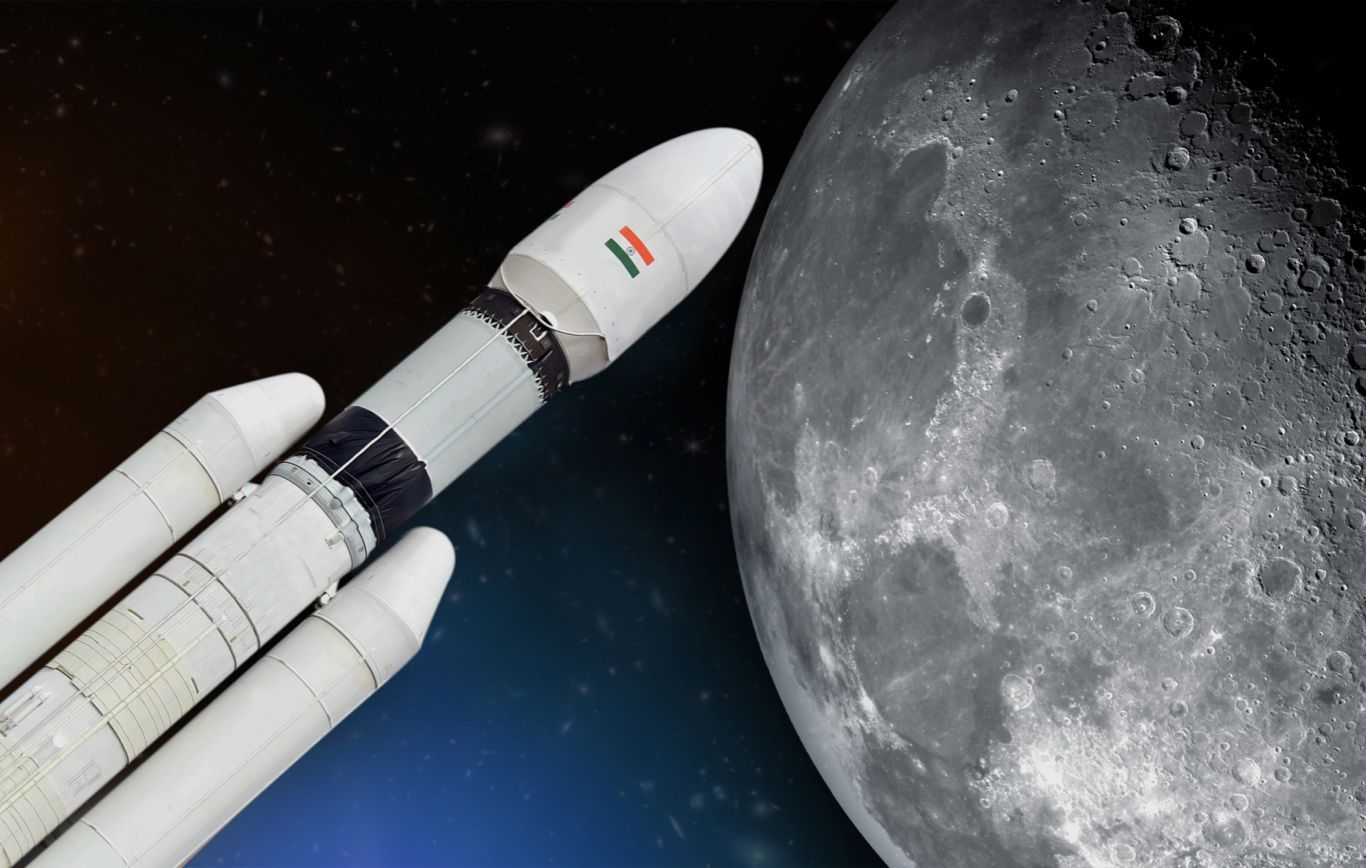
(Image: Adobe)
On Wednesday, India made history in successfully carrying out a soft landing of their Chandrayaan-3 mission. The Vikram lander arrived at the surface after completing its journey that began on July 14th. Not only will India become the fourth nation to successfully land on the Moon, but the first to safely deliver a lander at the lunar south pole.
Prime Minister Modi said that the success “belongs to all humanity”, perhaps somewhat reflecting the position that India finds itself in as a rapidly growing space power. With the slow demise of Russia in space, and China and the USA ever skeptical of each others intentions, it may be the role of India to forge a path that allows space to be the benefit of all humankind.
The lunar south pole has been chosen with a purpose, in order to analyse the soil and regolith in the hunt for lunar ice. India’s 6-wheeled Pragyan rover has now been released from the lander and will begin its job of examining the mineral makeup of the lunar surface, relaying data to the Chandrayaan-2 orbiter, which will in turn send it back to Earth. The vehicles will operate for 2 weeks (one lunar day), and is unlikely they will survive the long lunar night, when temperatures plummet to -130 Celsius.
It cannot be understated how significant the locating of water will be. As humanity looks to expand its reach into space and establish a permanent lunar presence, water will be used for a variety of reasons, such a producing rocket fuel and oxygen. NASA will also build on their quest to locate water, when they aim to deliver their Polar Resources Ice Mining Experiment-1, or PRIME-1, to the lunar south pole, as part of a lander mission from Intuitive Machines in 2024.
Russia’s Luna-25 crashes into the lunar surface
Russia’s Luna-25 mission was also tasked with this mission, locating and identifying sites at the south pole containing water ice. However, the spacecraft experienced an anomaly on August 20th, causing it to smash into the surface. The failure will put a dent into Russia’s waning reputation in Space, with the head of Roscosmos blaming decades of inactivity in lunar exploration for the failed mission.
Russia may also be careful to understand how such failures could impact their international standing, as the Ukraine crisis unfolds, and with China maybe looking over their shoulder at the effectiveness of their main partner for their own sovereign lunar exploration programme (ILRS). China have in fact been sourcing more partners this week, in signing cooperative deals with South Africa, and taking the first payloads of scientific experiments onboard their Tiangong space station, which were selected in cooperation with the United Nations Office for Outer Space Affairs (UNOOSA).
With the rise of India, and the growth of the US-led Artemis Accords alliance, we are seeing the shifting of influence in space. But we mustn’t write Russia off yet, as they still possess of fine space heritage and will look forwards to their Luna-26 mission, planned for 2027.
US companies build on plans to replace ISS, and growing desire for space in defence
Influence is also shifting in orbit, around the Moon and Earth. Utilising lunar orbit is and will be vital, as nations and companies establish an ongoing lunar presence. For example, India’s Vikram lander is using its Chandrayaan-2 obiter, sent in 2019, to relay data back to Earth.
Furthermore, last year NASA sent its CAPSTONE cubesat to analyse the stability of lunar orbit for its future Lunar Gateway station. This week, NASA announced that they aim to use Gateway to transfer astronauts to the lunar surface from the Artemis IV mission, planned for 2028. It will be humankind’s first human-proof space station outside of Earth orbit.
But a growing urgency surrounds the looming retirement of ISS and how the US and it partners will maintain a human foothold in orbit. China completed their Tiangong station last year, and have made an open invitation to all UN members to cooperate on the station. Furthermore, Russia has already announced plans for their Russian Orbital Service Station (ROSS), due to begin construction in 2027.
The west are looking towards the commercial sector to provide solutions, and this week it was announced that one contender, Axiom Space, have raised $350 million from Saudi Arabian and South Korean investors to continue development of a commercial space station. From 2026 Axiom will attach a series of module to ISS, which will later detach and form the core of a standalone station.
Additionally, US-based Redwire Space has teamed up with Sierra Space in order to install a biotech experiment platform on Sierra’s upcoming commercial space station. The equipment will be added to one of Sierra’s inflatable modules, named Large Integrated Flexible Environment (LIFE) modules. Sierra aim to launch a demonstrator (or pathfinder) module in 2026.
A growing need for space tech in security and defence
Since the beginning of the Ukraine crisis it has become abundantly clear how vital the use of space is for the defence sector. The use of satellites for imaging and communications in the conflict have shown us where the new frontier of warfare could be.
The US Air Force has awarded $1.25 million to a commercial satellite company, Umbra, to “demonstrate the capabilities of space-based radar sensors to track moving targets on the ground” according to Space News.
Also, the US Space Development Agency (SDA) has awarded contracts worth a combined $1.5 billion to Lockheed Martin and Northrop Grumman for a prototype of their Tranche 2 Transport Layer (T2TL) constellation. The satellites are designed to deliver global communications and encrypted connectivity to support missions.
North Korea are also continuing to establish their own satellite capabilities, but their latest attempt to launch a spy satellite on Thursday ended in failure. This comes only months after a previous failed attempt, but their space agency said it will try again in October.
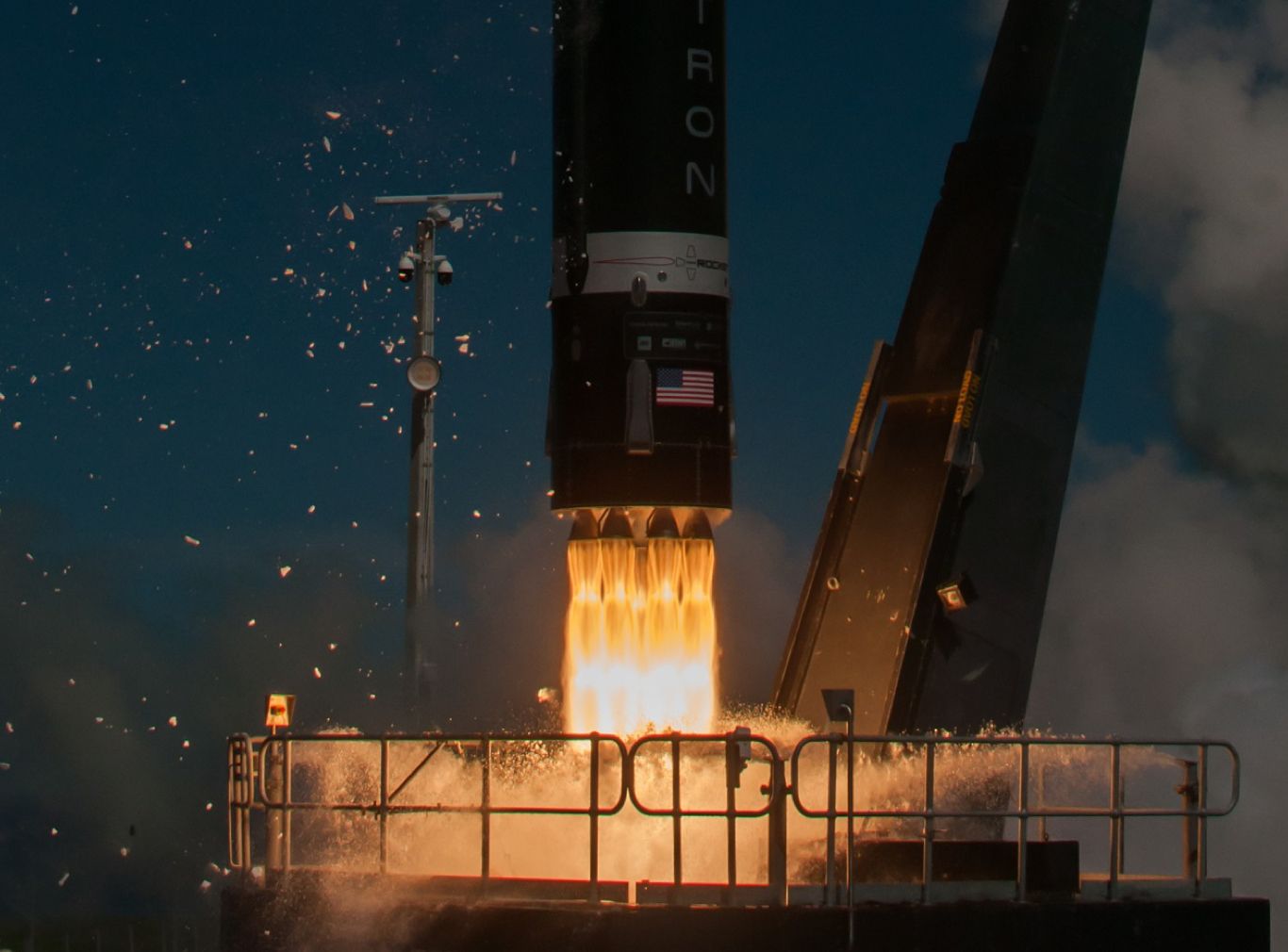
Rocket Lab reuse their engine on Electron (Image: Andrew Burns and Simon Moffatt)
Europe continue bid to lead sustainability, and reusable milestone for Rocket Lab
As well as the defence sector, debris removal and sustainability are other areas where agencies and startups are increasing their presence. Europe and European nations seem to be leading this charge. In July ESA carried out a controlled reentry of one of their ageing satellites, as a measure to remove debris. Furthermore, in June they revealed their “Zero Debris Charter”, with the aim of preventing any further space debris.
However, an ESA-backed debris removal demonstration became itself a target of space debris this week. ClearSpace (Swiss) are due to remove a payload adapter named Vespa, but the US Space Force have informed ESA that new pieces of debris have appeared in the area, likely caused by Vespa being struck itself by debris. It is not yet known if the demonstration is still able to go ahead.
Nonetheless, the incident clearly highlights the pressing issue of space debris and the work needed to be carried out by companies such as ClearSpace. Japan-based Astroscale are also due to carry out a demonstration on behalf of the UK and ESA in 2025.
Following this European trend in sustainability, this week the UK Space Agency awarded ten new projects up £55,000 (approx $70,000) that will use Earth observation tools and satellite technology “to produce forecasts and models that can be used by sectors ranging from agriculture and energy, to finance and insurance.”
Rocket Lab successfully reuses engine
New Zealand-based Rocket Lab have joined the elite club of launch providers who can boast the successful use of reusability in their rockets. SpaceX’s reuse of boosters has drastically transformed the market, reducing costs, increasing efficient and opening up space for more stakeholders.
Rocket Lab aren’t quite at the stage of SpaceX just yet, but have this week successfully reused one of their Rutherford Engines for an Electron launch on August 23rd. Furthermore the booster used for Electron is also designed for recovery and reuse.
Furthermore, working towards the target of full reusability, writing on X (formerly Twitter), Elon Musk has said that "Next Starship launch soon”. The next Starship launch will of course be another milestone moment for the industry, but SpaceX are still yet to receive an FAA license for the launch, so for now we wait for a set date.
External Links
This Week
*News articles posted here are not property of ANASDA GmbH and belong to their respected owners. Postings here are external links only.
Our future in space
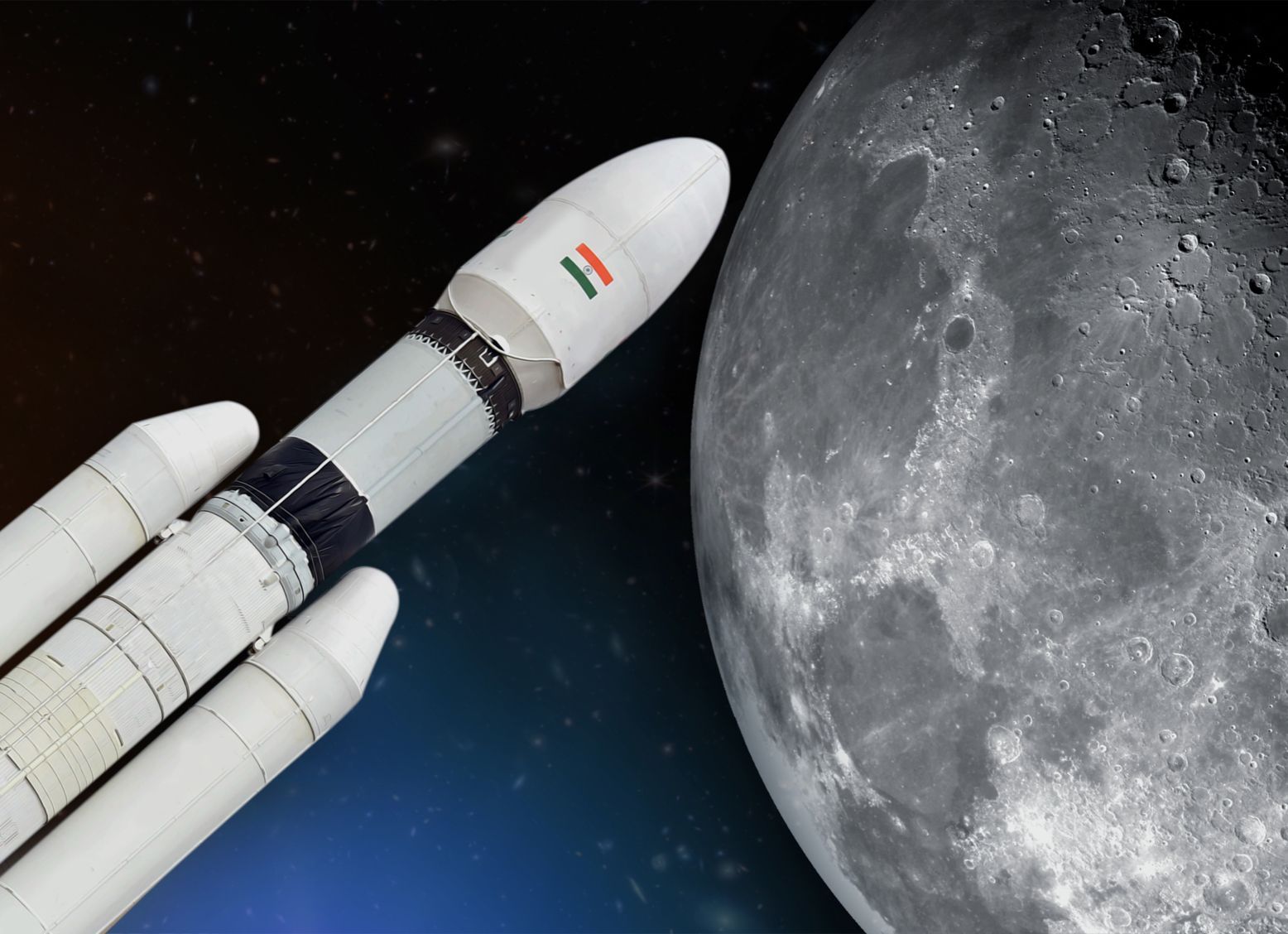
(Image: Adobe)
25 August 2023
India triumph while Russia stumble, and space at the forefront of defence and sustainability - Space News Roundup
On Wednesday, India made history in successfully carrying out a soft landing of their Chandrayaan-3 mission. The Vikram lander arrived at the surface after completing its journey that began on July 14th. Not only will India become the fourth nation to successfully land on the Moon, but the first to safely deliver a lander at the lunar south pole.
Prime Minister Modi said that the success “belongs to all humanity”, perhaps somewhat reflecting the position that India finds itself in as a rapidly growing space power. With the slow demise of Russia in space, and China and the USA ever skeptical of each others intentions, it may be the role of India to forge a path that allows space to be the benefit of all humankind.
The lunar south pole has been chosen with a purpose, in order to analyse the soil and regolith in the hunt for lunar ice. India’s 6-wheeled Pragyan rover has now been released from the lander and will begin its job of examining the mineral makeup of the lunar surface, relaying data to the Chandrayaan-2 orbiter, which will in turn send it back to Earth. The vehicles will operate for 2 weeks (one lunar day), and is unlikely they will survive the long lunar night, when temperatures plummet to -130 Celsius.
It cannot be understated how significant the locating of water will be. As humanity looks to expand its reach into space and establish a permanent lunar presence, water will be used for a variety of reasons, such a producing rocket fuel and oxygen. NASA will also build on their quest to locate water, when they aim to deliver their Polar Resources Ice Mining Experiment-1, or PRIME-1, to the lunar south pole, as part of a lander mission from Intuitive Machines in 2024.
Russia’s Luna-25 crashes into the lunar surface
Russia’s Luna-25 mission was also tasked with this mission, locating and identifying sites at the south pole containing water ice. However, the spacecraft experienced an anomaly on August 20th, causing it to smash into the surface. The failure will put a dent into Russia’s waning reputation in Space, with the head of Roscosmos blaming decades of inactivity in lunar exploration for the failed mission.
Russia may also be careful to understand how such failures could impact their international standing, as the Ukraine crisis unfolds, and with China maybe looking over their shoulder at the effectiveness of their main partner for their own sovereign lunar exploration programme (ILRS). China have in fact been sourcing more partners this week, in signing cooperative deals with South Africa, and taking the first payloads of scientific experiments onboard their Tiangong space station, which were selected in cooperation with the United Nations Office for Outer Space Affairs (UNOOSA).
With the rise of India, and the growth of the US-led Artemis Accords alliance, we are seeing the shifting of influence in space. But we mustn’t write Russia off yet, as they still possess of fine space heritage and will look forwards to their Luna-26 mission, planned for 2027.
US companies build on plans to replace ISS, and growing desire for space in defence
Influence is also shifting in orbit, around the Moon and Earth. Utilising lunar orbit is and will be vital, as nations and companies establish an ongoing lunar presence. For example, India’s Vikram lander is using its Chandrayaan-2 obiter, sent in 2019, to relay data back to Earth.
Furthermore, last year NASA sent its CAPSTONE cubesat to analyse the stability of lunar orbit for its future Lunar Gateway station. This week, NASA announced that they aim to use Gateway to transfer astronauts to the lunar surface from the Artemis IV mission, planned for 2028. It will be humankind’s first human-proof space station outside of Earth orbit.
But a growing urgency surrounds the looming retirement of ISS and how the US and it partners will maintain a human foothold in orbit. China completed their Tiangong station last year, and have made an open invitation to all UN members to cooperate on the station. Furthermore, Russia has already announced plans for their Russian Orbital Service Station (ROSS), due to begin construction in 2027.
The west are looking towards the commercial sector to provide solutions, and this week it was announced that one contender, Axiom Space, have raised $350 million from Saudi Arabian and South Korean investors to continue development of a commercial space station. From 2026 Axiom will attach a series of module to ISS, which will later detach and form the core of a standalone station.
Additionally, US-based Redwire Space has teamed up with Sierra Space in order to install a biotech experiment platform on Sierra’s upcoming commercial space station. The equipment will be added to one of Sierra’s inflatable modules, named Large Integrated Flexible Environment (LIFE) modules. Sierra aim to launch a demonstrator (or pathfinder) module in 2026.
A growing need for space tech in security and defence
Since the beginning of the Ukraine crisis it has become abundantly clear how vital the use of space is for the defence sector. The use of satellites for imaging and communications in the conflict have shown us where the new frontier of warfare could be.
The US Air Force has awarded $1.25 million to a commercial satellite company, Umbra, to “demonstrate the capabilities of space-based radar sensors to track moving targets on the ground” according to Space News.
Also, the US Space Development Agency (SDA) has awarded contracts worth a combined $1.5 billion to Lockheed Martin and Northrop Grumman for a prototype of their Tranche 2 Transport Layer (T2TL) constellation. The satellites are designed to deliver global communications and encrypted connectivity to support missions.
North Korea are also continuing to establish their own satellite capabilities, but their latest attempt to launch a spy satellite on Thursday ended in failure. This comes only months after a previous failed attempt, but their space agency said it will try again in October.
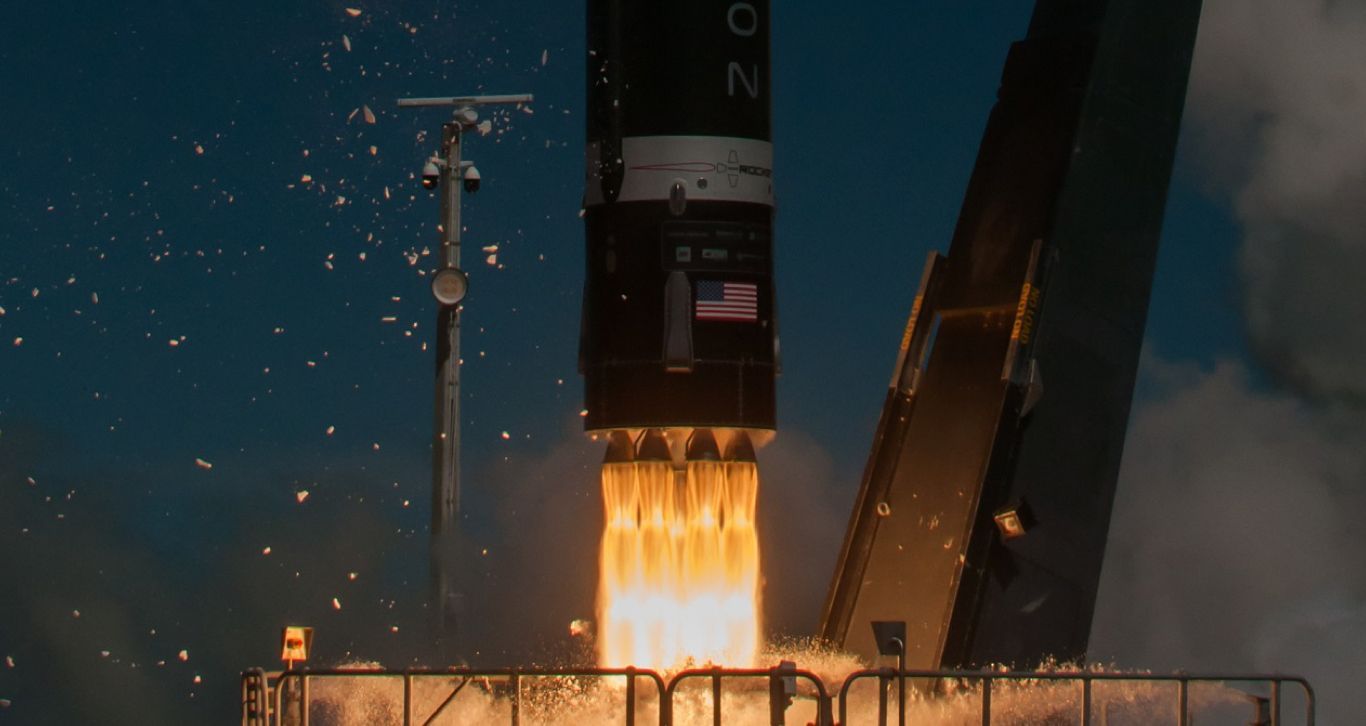
Rocket Lab reuse their engine on Electron (Image: Andrew Burns and Simon Moffatt)
Europe continue bid to lead sustainability, and reusable milestone for Rocket Lab
As well as the defence sector, debris removal and sustainability are other areas where agencies and startups are increasing their presence. Europe and European nations seem to be leading this charge. In July ESA carried out a controlled reentry of one of their ageing satellites, as a measure to remove debris. Furthermore, in June they revealed their “Zero Debris Charter”, with the aim of preventing any further space debris.
However, an ESA-backed debris removal demonstration became itself a target of space debris this week. ClearSpace (Swiss) are due to remove a payload adapter named Vespa, but the US Space Force have informed ESA that new pieces of debris have appeared in the area, likely caused by Vespa being struck itself by debris. It is not yet known if the demonstration is still able to go ahead.
Nonetheless, the incident clearly highlights the pressing issue of space debris and the work needed to be carried out by companies such as ClearSpace. Japan-based Astroscale are also due to carry out a demonstration on behalf of the UK and ESA in 2025.
Following this European trend in sustainability, this week the UK Space Agency awarded ten new projects up £55,000 (approx $70,000) that will use Earth observation tools and satellite technology “to produce forecasts and models that can be used by sectors ranging from agriculture and energy, to finance and insurance.”
Rocket Lab successfully reuses engine
New Zealand-based Rocket Lab have joined the elite club of launch providers who can boast the successful use of reusability in their rockets. SpaceX’s reuse of boosters has drastically transformed the market, reducing costs, increasing efficient and opening up space for more stakeholders.
Rocket Lab aren’t quite at the stage of SpaceX just yet, but have this week successfully reused one of their Rutherford Engines for an Electron launch on August 23rd. Furthermore the booster used for Electron is also designed for recovery and reuse.
Furthermore, working towards the target of full reusability, writing on X (formerly Twitter), Elon Musk has said that "Next Starship launch soon”. The next Starship launch will of course be another milestone moment for the industry, but SpaceX are still yet to receive an FAA license for the launch, so for now we wait for a set date.
Share this article
External Links
This Week
*News articles posted here are not property of ANASDA GmbH and belong to their respected owners. Postings here are external links only.
25 August 2023
India triumph while Russia stumble, and space at the forefront of defence and sustainability - Space News Roundup
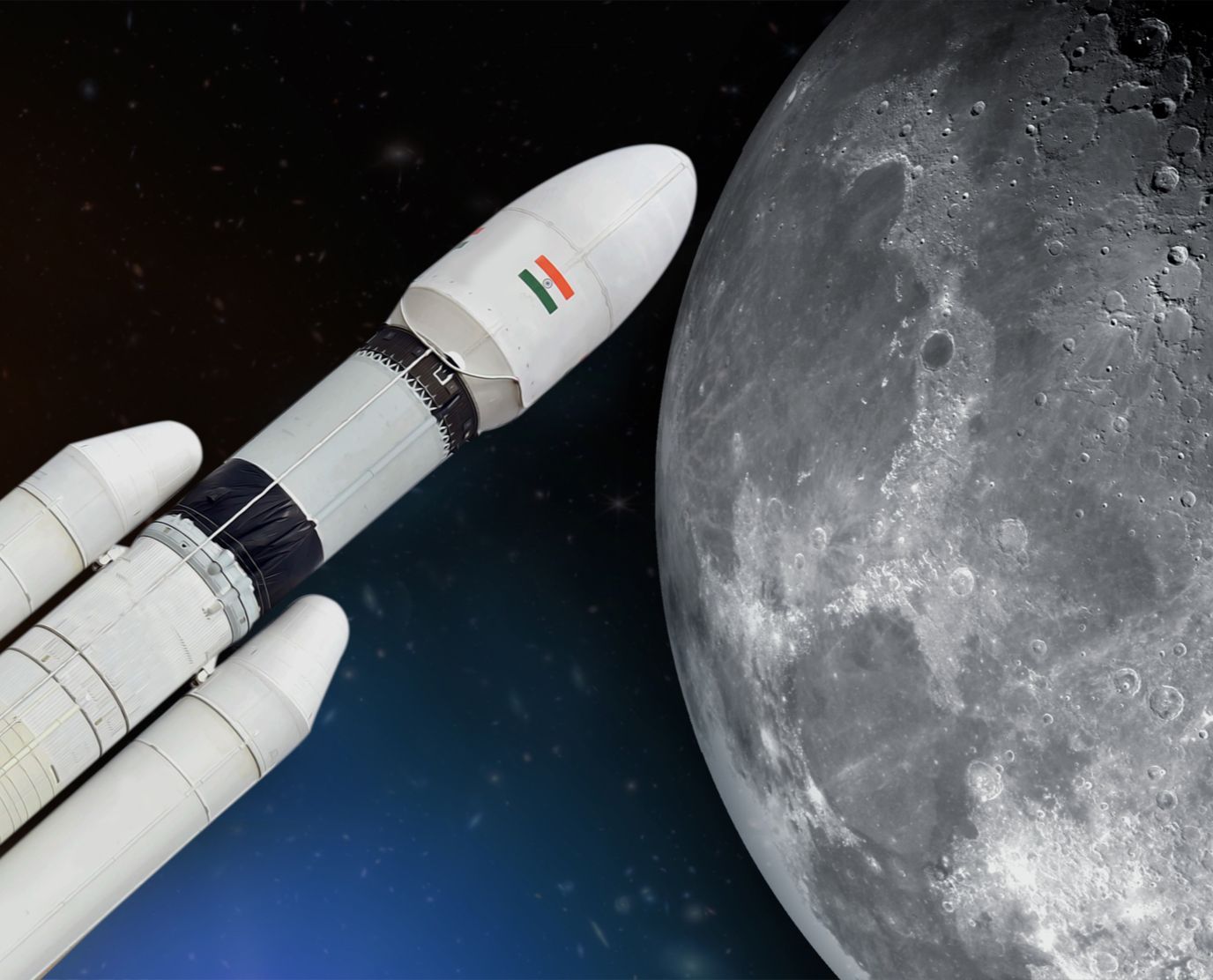
(Image: Adobe)
On Wednesday, India made history in successfully carrying out a soft landing of their Chandrayaan-3 mission. The Vikram lander arrived at the surface after completing its journey that began on July 14th. Not only will India become the fourth nation to successfully land on the Moon, but the first to safely deliver a lander at the lunar south pole.
Prime Minister Modi said that the success “belongs to all humanity”, perhaps somewhat reflecting the position that India finds itself in as a rapidly growing space power. With the slow demise of Russia in space, and China and the USA ever skeptical of each others intentions, it may be the role of India to forge a path that allows space to be the benefit of all humankind.
The lunar south pole has been chosen with a purpose, in order to analyse the soil and regolith in the hunt for lunar ice. India’s 6-wheeled Pragyan rover has now been released from the lander and will begin its job of examining the mineral makeup of the lunar surface, relaying data to the Chandrayaan-2 orbiter, which will in turn send it back to Earth. The vehicles will operate for 2 weeks (one lunar day), and is unlikely they will survive the long lunar night, when temperatures plummet to -130 Celsius.
It cannot be understated how significant the locating of water will be. As humanity looks to expand its reach into space and establish a permanent lunar presence, water will be used for a variety of reasons, such a producing rocket fuel and oxygen. NASA will also build on their quest to locate water, when they aim to deliver their Polar Resources Ice Mining Experiment-1, or PRIME-1, to the lunar south pole, as part of a lander mission from Intuitive Machines in 2024.
Russia’s Luna-25 crashes into the lunar surface
Russia’s Luna-25 mission was also tasked with this mission, locating and identifying sites at the south pole containing water ice. However, the spacecraft experienced an anomaly on August 20th, causing it to smash into the surface. The failure will put a dent into Russia’s waning reputation in Space, with the head of Roscosmos blaming decades of inactivity in lunar exploration for the failed mission.
Russia may also be careful to understand how such failures could impact their international standing, as the Ukraine crisis unfolds, and with China maybe looking over their shoulder at the effectiveness of their main partner for their own sovereign lunar exploration programme (ILRS). China have in fact been sourcing more partners this week, in signing cooperative deals with South Africa, and taking the first payloads of scientific experiments onboard their Tiangong space station, which were selected in cooperation with the United Nations Office for Outer Space Affairs (UNOOSA).
With the rise of India, and the growth of the US-led Artemis Accords alliance, we are seeing the shifting of influence in space. But we mustn’t write Russia off yet, as they still possess of fine space heritage and will look forwards to their Luna-26 mission, planned for 2027.
US companies build on plans to replace ISS, and growing desire for space in defence
Influence is also shifting in orbit, around the Moon and Earth. Utilising lunar orbit is and will be vital, as nations and companies establish an ongoing lunar presence. For example, India’s Vikram lander is using its Chandrayaan-2 obiter, sent in 2019, to relay data back to Earth.
Furthermore, last year NASA sent its CAPSTONE cubesat to analyse the stability of lunar orbit for its future Lunar Gateway station. This week, NASA announced that they aim to use Gateway to transfer astronauts to the lunar surface from the Artemis IV mission, planned for 2028. It will be humankind’s first human-proof space station outside of Earth orbit.
But a growing urgency surrounds the looming retirement of ISS and how the US and it partners will maintain a human foothold in orbit. China completed their Tiangong station last year, and have made an open invitation to all UN members to cooperate on the station. Furthermore, Russia has already announced plans for their Russian Orbital Service Station (ROSS), due to begin construction in 2027.
The west are looking towards the commercial sector to provide solutions, and this week it was announced that one contender, Axiom Space, have raised $350 million from Saudi Arabian and South Korean investors to continue development of a commercial space station. From 2026 Axiom will attach a series of module to ISS, which will later detach and form the core of a standalone station.
Additionally, US-based Redwire Space has teamed up with Sierra Space in order to install a biotech experiment platform on Sierra’s upcoming commercial space station. The equipment will be added to one of Sierra’s inflatable modules, named Large Integrated Flexible Environment (LIFE) modules. Sierra aim to launch a demonstrator (or pathfinder) module in 2026.
A growing need for space tech in security and defence
Since the beginning of the Ukraine crisis it has become abundantly clear how vital the use of space is for the defence sector. The use of satellites for imaging and communications in the conflict have shown us where the new frontier of warfare could be.
The US Air Force has awarded $1.25 million to a commercial satellite company, Umbra, to “demonstrate the capabilities of space-based radar sensors to track moving targets on the ground” according to Space News.
Also, the US Space Development Agency (SDA) has awarded contracts worth a combined $1.5 billion to Lockheed Martin and Northrop Grumman for a prototype of their Tranche 2 Transport Layer (T2TL) constellation. The satellites are designed to deliver global communications and encrypted connectivity to support missions.
North Korea are also continuing to establish their own satellite capabilities, but their latest attempt to launch a spy satellite on Thursday ended in failure. This comes only months after a previous failed attempt, but their space agency said it will try again in October.
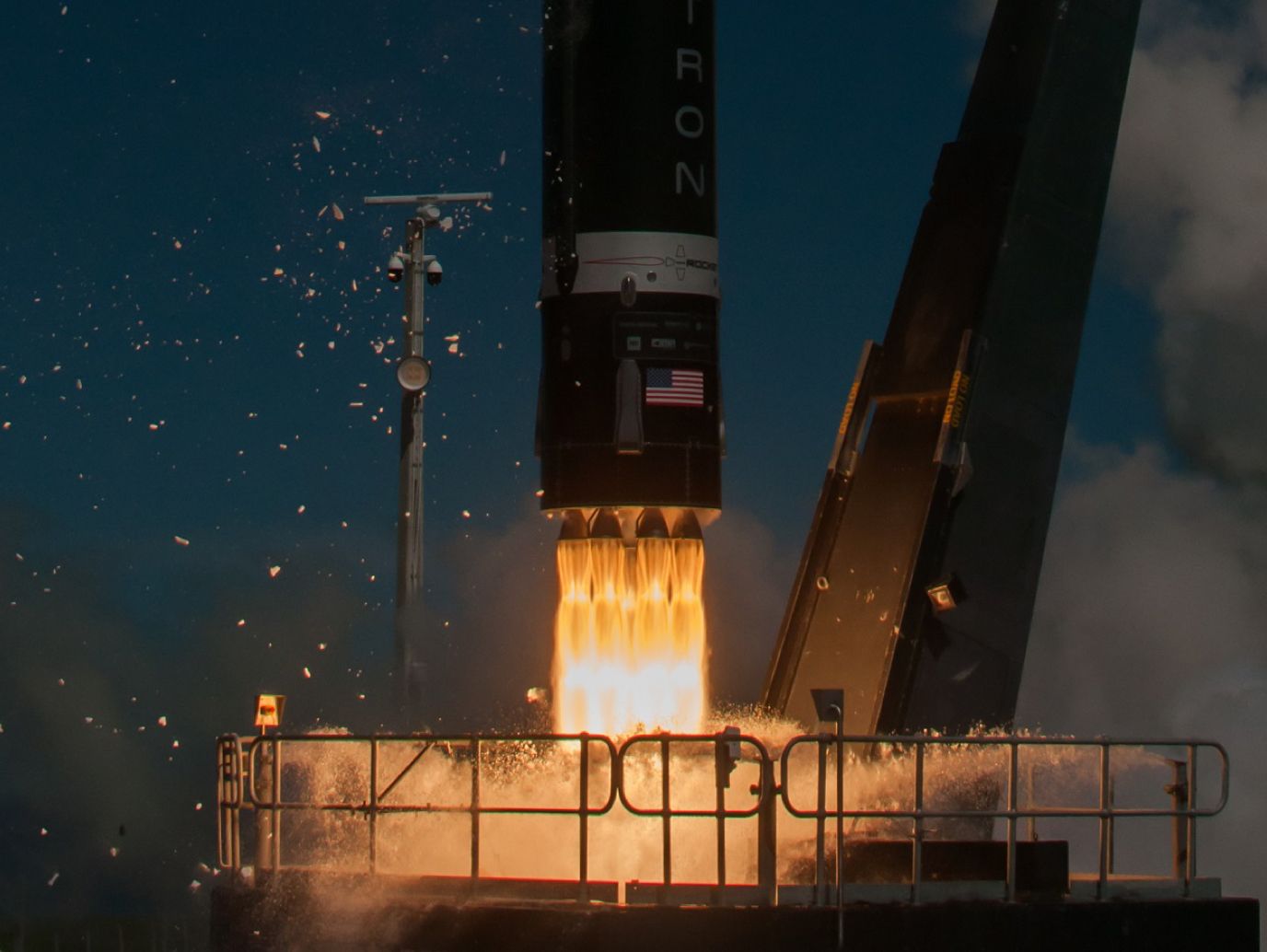
Rocket Lab reuse their engine on Electron (Image: Andrew Burns and Simon Moffatt)
Europe continue bid to lead sustainability, and reusable milestone for Rocket Lab
As well as the defence sector, debris removal and sustainability are other areas where agencies and startups are increasing their presence. Europe and European nations seem to be leading this charge. In July ESA carried out a controlled reentry of one of their ageing satellites, as a measure to remove debris. Furthermore, in June they revealed their “Zero Debris Charter”, with the aim of preventing any further space debris.
However, an ESA-backed debris removal demonstration became itself a target of space debris this week. ClearSpace (Swiss) are due to remove a payload adapter named Vespa, but the US Space Force have informed ESA that new pieces of debris have appeared in the area, likely caused by Vespa being struck itself by debris. It is not yet known if the demonstration is still able to go ahead.
Nonetheless, the incident clearly highlights the pressing issue of space debris and the work needed to be carried out by companies such as ClearSpace. Japan-based Astroscale are also due to carry out a demonstration on behalf of the UK and ESA in 2025.
Following this European trend in sustainability, this week the UK Space Agency awarded ten new projects up £55,000 (approx $70,000) that will use Earth observation tools and satellite technology “to produce forecasts and models that can be used by sectors ranging from agriculture and energy, to finance and insurance.”
Rocket Lab successfully reuses engine
New Zealand-based Rocket Lab have joined the elite club of launch providers who can boast the successful use of reusability in their rockets. SpaceX’s reuse of boosters has drastically transformed the market, reducing costs, increasing efficient and opening up space for more stakeholders.
Rocket Lab aren’t quite at the stage of SpaceX just yet, but have this week successfully reused one of their Rutherford Engines for an Electron launch on August 23rd. Furthermore the booster used for Electron is also designed for recovery and reuse.
Furthermore, working towards the target of full reusability, writing on X (formerly Twitter), Elon Musk has said that "Next Starship launch soon”. The next Starship launch will of course be another milestone moment for the industry, but SpaceX are still yet to receive an FAA license for the launch, so for now we wait for a set date.
Share this article
External Links
This Week
*News articles posted here are not property of ANASDA GmbH and belong to their respected owners. Postings here are external links only.
















